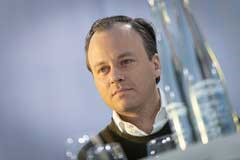 Can you explain how ENGIE Impact works within the Group to create a better customer approach?
Can you explain how ENGIE Impact works within the Group to create a better customer approach?
Mathias Lelièvre : The relationship between ENGIE Impact and Group business units is critical to the unique value proposition we deliver to clients. The combination of ENGIE Impact’s strategy and data-driven service capabilities with the vast set of offerings we propose within the Group allows us to implement real-world solutions that support our clients’ sustainability and carbon neutrality ambitions.
What are the new needs of clients during this very special period?
M. L. : In a period like this, it's more critical than ever to be highly collaborative with clients to understand where they are and what their needs are. We use discovery questions to identify their biggest pain points. We also leverage the data that we gather for clients to understand their environmental footprint. We monitor energy consumption, water consumption and waste production across 1,000,000 sites throughout the world for more than 1,000 clients. It gives us a good idea of the benchmarks and we use this information to engage new clients.
What are the new trends you already have identified?
M. L. : Right now, the impact of the pandemic is incredibly varied for our clients. For some, it has massively impacted their business, while others continue to move forward with their plans and even evaluate new opportunities. I must say that it was a good proof point to see how many clients continue to engage, sign contracts, and issue RFPs during the pandemic. Compared to ten years ago, it tells us a lot about the change that is happening and how clients position sustainability at the heart of their strategy.
Many clients are now looking to understand how to operate in their new normal – for example, what does it mean for sustainability and decarbonization if a large portion of their workforce goes remote? How will operational changes at facilities promoting health and safety affect energy consumption? As we rebound, are there opportunities to integrate more renewable energy into the supply mix? We can already see a much larger focus on energy efficiency with clear and short-term bottom line effects.
What did you put in place as new offer for the client restart?
M. L. : We are helping clients navigate their individual situations and adapting the ways in which we work with them. For example, we‘re offering remote energy audit programs for clients. Here we remotely analyze building and energy usage data to identify opportunities for improved energy efficiency.
We also see a lot of clients who want to know where they should invest to become more resilient. There is no doubt that climate change risks are as systemic and global as those of the pandemic we are currently experiencing, and with even more dramatic consequences for humanity.
